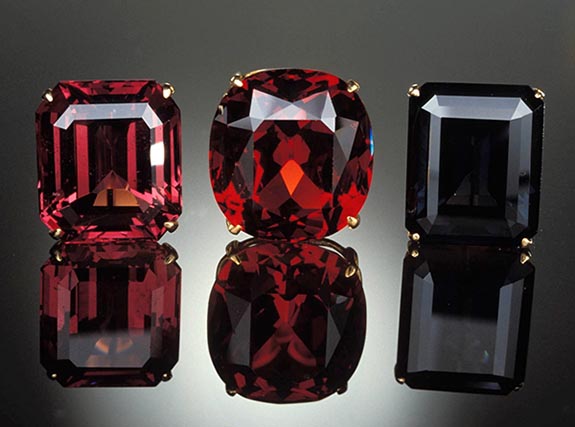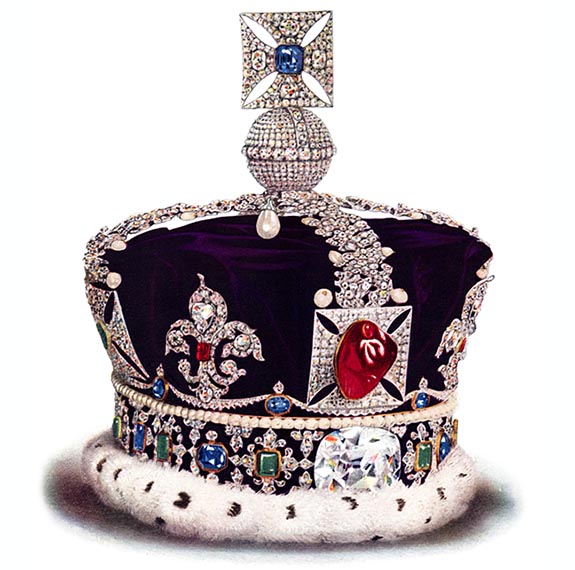The modern birthstone list has been amended only three times in the past 106 years, so when the American Gem Trade Association (AGTA) and Jewelers of America (JA) announced in 2016 that spinel would be joining peridot as an official birthstone for the month of August, the news surprised jewelers and gem fans alike.
Available in a rainbow of vibrant colors — but best known as a ruby doppelgänger — the spinel presents a beautiful alternative to the yellow-green peridot. Part of the stone's intrigue is that it has been misidentified for so many years. In fact, the International Colored Gemstone Association (ICA) called spinel “the great impostor of gemstone history” because some of the world's most famous “rubies” are actually spinels.
The 170-carat Black Prince Ruby, which is prominently displayed on the Imperial State Crown of England, is actually an irregular cabochon red spinel. The 361-carat Timur Ruby, which was presented by the East India Company to Queen Victoria as a gift in 1851, was later identified as a spinel. And the 398-carat ruby-red gem that tops the Imperial Crown of Russia commissioned by Catherine the Great in 1763 turned out to be... a spinel.
According to the Smithsonian, it wasn’t until 1783 that spinel was recognized as a mineral distinct from corundum (ruby and sapphire). Ruby is composed of aluminum oxide, while spinel is made of magnesium aluminum oxide. Both get their reddish color from impurities of chromium in their chemical structure.
“At certain moments in history, when there is a strong call from gem enthusiasts to expand the list of official birthstones, Jewelers of America believes in recognizing the importance of historically significant gemstones and giving gemstone lovers a choice that suits their preferences,” JA President and CEO David Bonaparte said in 2016.
While spinel is best known for its ability to imitate the color of ruby, the gem also comes in soft pastel shades of pink and purple, fiery oranges, and cool hues ranging from powdery gray to intense blue. It is a durable gem with a hardness of 8.0 on the Mohs scale. By comparison, diamond rates a 10 and ruby rates a 9.
Established in 1912 by the American National Retail Jewelers Association (now known as JA), the modern birthstone list was updated in 1952 to add alexandrite (June), citrine (November), tourmaline (October) and zircon (December). The listed was amended again in 2002 when tanzanite joined the group of December birthstones.
Some of the most beautiful spinels — especially the pink, red and orange-red varieties — are found in Myanmar. They’re also sourced from Afghanistan, Brazil, Cambodia, Kenya, Russia, Sri Lanka, Tanzania, Thailand and Vietnam.
Credits: Gem photo by D. Penland/Smithsonian. Imperial State Crown of England by Cyril Davenport (1848 – 1941) [Public domain], via Wikimedia Commons.


No comments:
Post a Comment